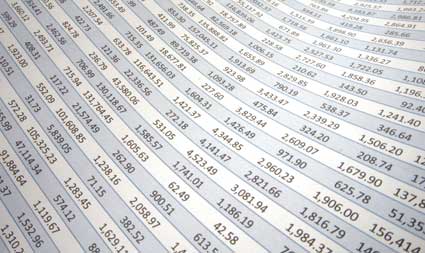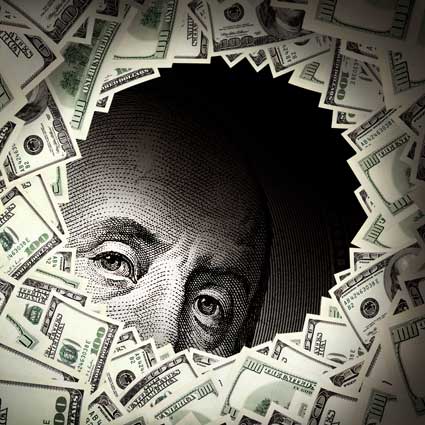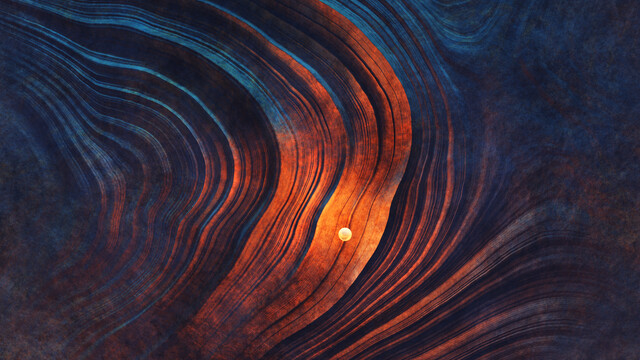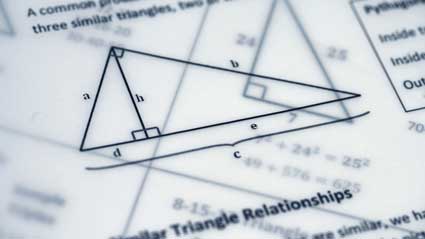A. Traveling Waves
However, in the late 1800's, the particle picture was replaced by the wave theory of light, which broadened the scope of study and logic to encompass specific phenomena associated with light such as refraction, diffraction, and interference.
B. Light Waves. Characteristics
Now more clearly understood, light is known to possess attributes of both particles and waves (as opposed to solely particles). In addition to this basic principle, making the assumption that the wave pattern is regular, all of the following traits are also characteristic of light waves:
Wavelength (l) = distance between adjacent crests or troughs.
v = l f
Frequency (f) = number of crests (or troughs) that pass by per unit time. This figure is equal to the inverse of the period.
f = 1/T
C. Rays
A ray is a line that, drawn from one wave crest to another, intersects each crest at right angles. In light waves, rays always point in the direction of the motion. Rays therefore provide a very useful perspective when describing the motion of light waves.
D. Properties of Light
When discussing the properties of light, we will cover reflection, refraction, dispersion, diffraction, and interference.
t Reflection
First, we will look at the Law of Reflection, which summarizes the governing rules for working with a reflection from a surface, like a mirror.
Law of Reflection. When light is reflected off of any surface, the angle that results, �1 is always equal to the angle of reflection, �2 .
Angles are always measured with respect to the normal of the surface.
t Refraction
Defined as the bending of light as it passes between materials of different optical density, the index of refraction of a given material is found by comparing the ratio of the speed of light in a vacuum to the speed of light in the material in question.
The denser the material, the slower the speed of light will be in the given material.
� The frequency of light is not altered when it passes from one medium to another.
� The change in speed and wavelength at the boundary between two materials are the factors that cause the light to change direction.
Total Internal Reflection. For a light ray passing from a denser to a less dense material, there is a critical angle of incidence at which the angle of refraction is 90 degrees. Light cannot pass through angles of incidence greater than 90 degrees; hence, it is reflected within the denser material.
t Dispersion Refraction and Reflection are interlinked, being that the wavelength of light is dependent upon the velocity of light in a given material, and it is also dependent upon its index of refraction. In general, as the index of refraction varies inversely with wavelength, it proves to be greater for shorter wavelengths. This causes light inside materials to be refracted by varying amounts based upon either the wavelength or color.
White Light and Newton. What happens to light as it passes through a prism? White light is composed of a continuous band of colors. The band of colors appears in the same pattern as the colors of a rainbow.
This experiment was first done by Sir Isaac Newton (1642-1727). Newton let a beam of sunlight pass through a glass prism and observed the white light spectrum. In a vacuum, light of any colors travels at the same speed. When light passes through a material, such as glass or water, the red light at one end of the spectrum travels faster than the violet light at the other end of the spectrum.
This difference in speed causes a change in the direction of light when going from air to glass and from glass to air. This change of direction is called refraction, and is greater for violet light than for red light. The speed of light in the glass depends on the color; thus, we get a continuous band as in the rainbow.
In short, rainbows are the result of a combination of dispersion inside a raindrop and total internal reflection of light from the back of raindrops.
t Diffraction
Diffraction is the visible "bending" of light waves around obstacles obstructing its path. In accordance with Huygen's principle, "All points along a wave front, act as if they were point sources," when a wave reaches a barrier that only has a tiny opening where all but one of the effective point sources are blocked, the light coming through the opening behaves as a single point source, whereby light emerges in all directions, rather than just passing through the one available slit.
� For noticeable diffraction effects to occur, the width of the opening must of equal or smaller size than the wavelength of the light.
t Interference
Interference occurs when two waves (of the same wavelength) are in what is known as "in phase," crests (and troughs) of one wave meet up with the crests (and troughs) of the second wave.
In contrast, should the crest of the first wave meet up with the trough of the second, this is then what is known as being completely "out of phase."
Constructive Interference. This is the condition when the resultant wave has two times the amplitude of the individual waves.
Destructive Interference. This occurs when two waves cancel each other. When constructive interference occurs, the net amplitude of the two waves is at a maximum, whereby when destructive interference occurs, the net amplitude is at a minimum.
Note: There are also situations that occur which fall in between these two extremes.
D. Young's Double Slit Experiment
One of the most important experiments ever conducted on wave theory was physicist Thomas Young's Double Slits. It clearly reveals the diffraction of light conducted with only the most basic forms of scientific equipment.
In the early 1800s, Young (1773-1829) used his Double Slit Experiment to prove that light was indeed a wave.
When two light beams interact they create interference, which can be constructive or destructive, as we have discussed earlier. The places where constructive and destructive interference occur are subject to constant change, since electromagnetic (em) waves emitted are capable of varying their phase.
Using one light source and splitting it into two beams Young found it possible to create two coherent sources of identical frequencies and constant phase differentials (identical differences between peaks of waves).
In order to conduct his classic experiment on interference effects that occur in light waves, Young passed two light rays through two slits, separated by a specified distance. In short, he used the slits as substitutes for point sources of light.




























